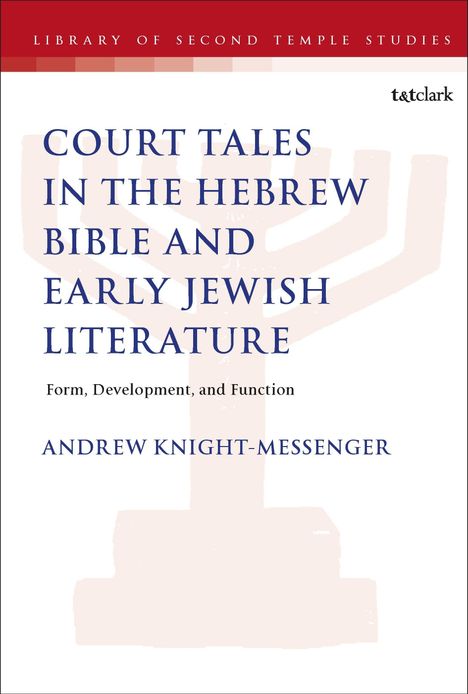Andrew Knight-Messenger: The Place of Court Tales in the Hebrew Bible and Early Jewish Literature, Gebunden
The Place of Court Tales in the Hebrew Bible and Early Jewish Literature
- Form, Development, and Function
Sie können den Titel schon jetzt bestellen. Versand an Sie erfolgt gleich nach Verfügbarkeit.
- Herausgeber:
- Lester L Grabbe
- Verlag:
- Bloomsbury Academic, 05/2026
- Einband:
- Gebunden
- Sprache:
- Englisch
- ISBN-13:
- 9781666980936
- Artikelnummer:
- 12527901
- Umfang:
- 240 Seiten
- Gewicht:
- 454 g
- Maße:
- 229 x 152 mm
- Stärke:
- 25 mm
- Erscheinungstermin:
- 14.5.2026
- Hinweis
-
Achtung: Artikel ist nicht in deutscher Sprache!
Klappentext
Andrew D. Knight-Messenger offers a fresh reassessment of a long-neglected genre within ancient Jewish literature in this volume. Focusing on the literary form known as the "court tale", narratives centered on Jewish figures navigating life in foreign royal courts, this study integrates newly available texts from the Dead Sea Scrolls into the broader corpus of Second Temple Jewish writings. These tales, which include well-known stories like those of Daniel and Esther, are reexamined here not merely as historical curiosities, but as theological and literary responses to the experience of exile.
Knight-Messenger argues that these narratives do more than recount survival in diaspora; they articulate diverse visions of restoration, divine sovereignty, and the reimagining of Jewish identity under foreign rule. By analyzing themes of sin, punishment, exile, and restoration, Knight-Messenger reveals how court tales challenged prevailing assumptions about exile as divine punishment, instead portraying it as a space for divine action and renewal. The volume also explores how these tales anticipate apocalyptic motifs, contributing to the emergence of Jewish eschatological thought.
Structured around a literary and historical analysis of both canonical and non-canonical texts, Knight-Messenger includes comparative insights from other ancient Near Eastern and Mediterranean traditions. The volume also traces the development and eventual decline of the genre, situating it within the broader evolution of Jewish literature.


